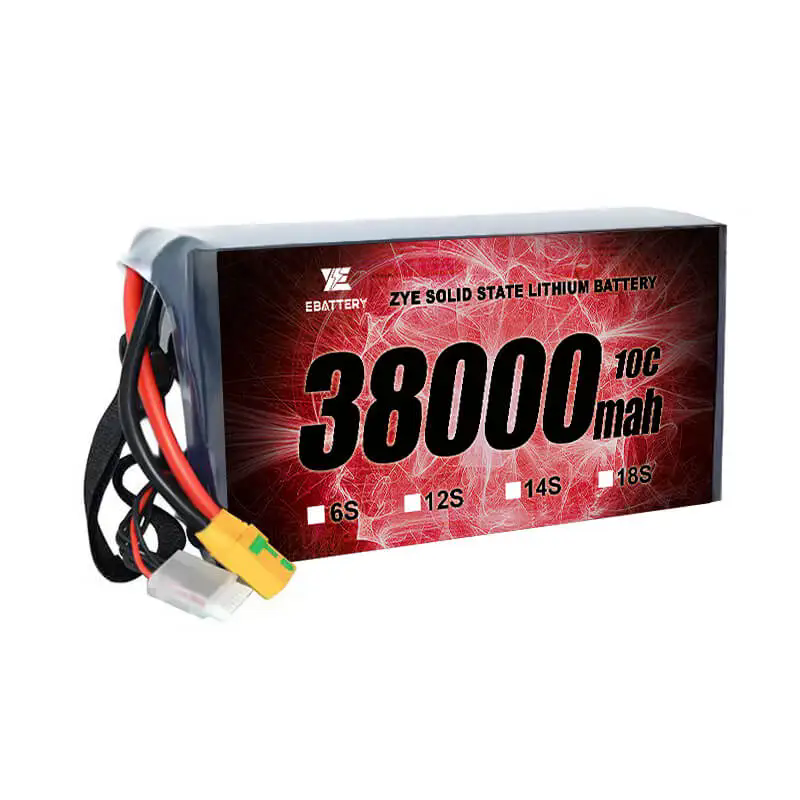What Are the Advantages of HV Solid State Batteries for the Future of Energy Storage?
2024-11-06
As the demand for efficient and reliable energy storage solutions grows, the spotlight is increasingly shifting toward high-voltage (HV) solid-state batteries. But what exactly makes these batteries stand out in the crowded landscape of energy storage technologies? Let’s delve into the features, benefits, and potential applications of HV solid-state batteries to understand why they are being hailed as the future of energy storage.
1. How Do HV Solid State Batteries Work?
HV solid-state batteries differ from traditional lithium-ion batteries primarily in their electrolyte composition. Instead of using a liquid electrolyte, these batteries employ a solid electrolyte, which enhances safety and efficiency. The solid-state design allows for higher energy densities, meaning more energy can be stored in a smaller space. This makes HV solid-state batteries not only compact but also capable of delivering higher voltages, which is crucial for many applications.
2. What Are the Key Benefits of HV Solid State Batteries?
One of the most significant benefits of HV solid-state batteries is their increased energy density compared to conventional batteries. Higher energy density translates to longer usage times between charges, making them ideal for applications such as electric vehicles (EVs) and renewable energy systems. Additionally, these batteries exhibit improved safety characteristics; the solid electrolyte is less flammable than liquid electrolytes, reducing the risk of fires or leaks.
3. Why Is Longevity an Important Factor for Battery Technologies?
Longevity is a critical aspect of battery technologies, especially as we shift toward more sustainable energy solutions. HV solid-state batteries tend to have a longer lifespan than traditional lithium-ion batteries, thanks to their robust construction and reduced degradation over time. This longevity not only leads to lower replacement costs but also enhances the overall sustainability of energy systems by minimizing waste.
4. In What Applications Are HV Solid State Batteries Gaining Popularity?
The applications for HV solid-state batteries are vast and varied. They are particularly promising for electric vehicles, where the demand for high energy density and safety is paramount. Additionally, these batteries are finding their way into grid storage solutions, enabling more efficient management of renewable energy sources like solar and wind. Their compact size and high performance make them suitable for portable electronics as well.
5. How Do HV Solid State Batteries Compare to Traditional Lithium-Ion Batteries?
When compared to traditional lithium-ion batteries, HV solid-state batteries offer several advantages. Aside from their higher energy density and safety profile, they also operate more efficiently at elevated temperatures. Traditional lithium-ion batteries can suffer from performance issues in extreme conditions, whereas HV solid-state batteries are better suited to handle such environments. This makes them more reliable for diverse applications.
6. What Challenges Are Associated with the Adoption of HV Solid State Batteries?
Despite their many advantages, HV solid-state batteries are not without challenges. The manufacturing processes for solid-state batteries are still being refined, and scalability remains a concern. Additionally, the materials used for solid electrolytes can be expensive and difficult to source. Overcoming these challenges will be key to widespread adoption and commercial success.
7. How Is Research Advancing the Development of HV Solid State Batteries?
Ongoing research is crucial for unlocking the full potential of HV solid-state batteries. Scientists and engineers are exploring new materials and manufacturing techniques to improve battery performance and reduce costs. Innovations in solid electrolyte materials and electrode designs are helping to enhance energy density and cycle life, bringing us closer to practical and affordable solid-state battery solutions.
8. What Role Will HV Solid State Batteries Play in the Transition to Renewable Energy?
As the world moves toward renewable energy sources, the need for efficient energy storage solutions becomes increasingly critical. HV solid-state batteries can play a significant role in this transition by providing a reliable and safe means to store energy generated from solar, wind, and other renewable sources. Their ability to deliver high energy densities makes them particularly suitable for balancing supply and demand in energy systems.
9. How Can Consumers Benefit from HV Solid State Batteries?
For consumers, the shift to HV solid-state batteries means access to longer-lasting and safer energy storage options. As these batteries become more prevalent in electric vehicles and portable electronics, users can expect improved performance, longer charge cycles, and enhanced safety features. The potential for reduced costs over time, due to longevity and efficiency, further benefits consumers.
10. Why Should We Be Excited About the Future of HV Solid State Batteries?
The future of HV solid-state batteries holds exciting possibilities for various industries. Their unique advantages position them as a key player in the evolution of energy storage technologies. As research continues and production methods improve, HV solid-state batteries could revolutionize the way we store and use energy, contributing significantly to sustainability and efficiency in our energy systems.
Conclusion: Are HV Solid State Batteries the Future of Energy Storage?
In conclusion, HV solid-state batteries represent a significant advancement in energy storage technology. Their benefits in energy density, safety, longevity, and versatility make them a compelling choice for a wide range of applications. As the demand for sustainable and efficient energy solutions continues to rise, HV solid-state batteries are poised to play a critical role in shaping the future of energy storage. As consumers and industries alike begin to recognize their potential, we may very well see these batteries become the standard in the energy landscape of tomorrow.



